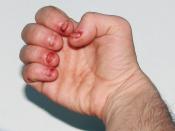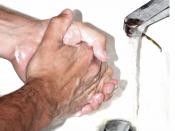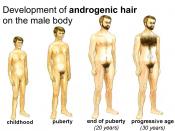For much of her life, Tina Peta kept a secret. She was so ashamed of a problem she had, she didn't want anyone to know about her suffering. Her problem was and is a little-known mental disorder called trichotillomania.
Tina is one of the most well known people who suffer from this disorder. Although, last year, I had the opportunity to visit with another woman who suffered from this disorder. Her name was Janine Huse, a cousin of one of my teachers. She informed me about her disorder, that I had previously never heard of.
Many of you are probably now wondering, what is Trichotillomania. Trichotillomania is defined as recurrent pulling out of one's hair, resulting in noticeable hair loss, which is not due to another medical condition. There is an increasing sense of tension immediately before pulling out the hair or when resisting the behavior and pleasure, gratification, or relief when pulling out the hair.
Trich is an obsessive-compulsive disorder. The word Trichotillomania is derived from the greek thrix, hair; tille, to pull; and mania, madness or frenzy.
Trich affects at least 2% of the population.
People frequently start compulsive hair pulling at 12 or 13 years of age, although commonly at a much younger or older age. The onset may be associated with hormonal changes at puberty, although many people recall a significantly stressful event associated with the onset.
Sufferers as a group pull hair from a wide range of body sites including the scalp, eyebrows, eyelashes, beard, pubic areas, and less commonly, underarms, chest, ears, nose, and general body hair. The sites pulled by particular people vary widely, and may be restricted to one or 2 sites. In an online interview on Sept 21, Dr. Carol Novak, a psychiatrist at Regions Hospital in St. Paul MN,


